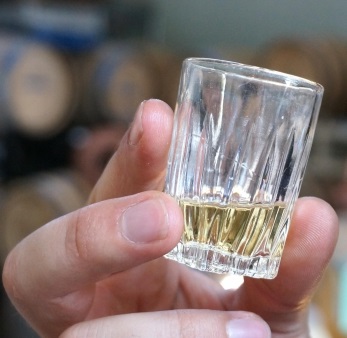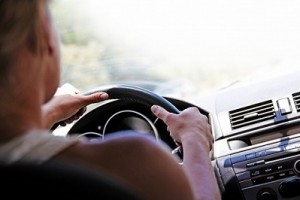Beam Suntory has used AR technology as a part of a new smartphone based experience for customers.
Beam Suntory, the bourbon maker, has now launched a new augmented reality experience that has been designed to show its customers how its bourbon is made, in a new, interesting, and innovative way.
The company is now using the BlippAR app as a part of its “The Bourbon Revival” retail program.
This program and the augmented reality experience are available to customers at liquor stores, featuring the Knob Creek, Maker’s 46, and Basil Hayden bourbons. According to the Beam Suntory senior director of commercial marketing, Michelle Cater, “The liquor store is a saturated environment, so we need to truly stand out in order to reach new consumers and educate shoppers on bourbon.”
This augmented reality experience has been created to work with any smartphone, regardless of operating system.
 Cater stated that “Based on our research, we know that new bourbon drinkers are eager to learn more about what makes bourbon unique. With augmented reality technology, we are able to engage shoppers in an immersive and interesting way.” This particular The Bourbon Revival promotion requires the BlippAR free app to be downloaded by people who wish to participate and view the AR features.
Cater stated that “Based on our research, we know that new bourbon drinkers are eager to learn more about what makes bourbon unique. With augmented reality technology, we are able to engage shoppers in an immersive and interesting way.” This particular The Bourbon Revival promotion requires the BlippAR free app to be downloaded by people who wish to participate and view the AR features.
Once the app has been installed, the AR technology codes that are posted on bourbon bottles and retail displays can be scanned. The mobile app them launches the 3D content that will appear on the user’s device screen, displayed overtop of the user’s actual environment. This makes it possible for the user to be able to interact with the bottle and create hologram-like versions of recipes and cocktails that are based on the product that they have scanned.
The primary goal of this augmented reality experience is to work as an introduction for the consumer to the different bourbons from Beam Suntory. This AR technology based experience also allows users to be able to understand the history of bourbon, learn how it is made, and to know the difference between this drink and whiskey. In fact, it even provides a “Bourbon Matchmaker” feature, which matches an individual’s own flavor and drinking preferences with the bourbon that they are likely to enjoy the most.
While AR technology has been developed to help to promote road safety, it could be causing the opposite result.
According to the results of preliminary studies on the use of augmented reality head up displays (HUDs) that show images on windshields that are meant to help to make driving safer and easier for motorists, the use of this technology could actually be making driving less safe.
The problem with AR technology while driving primarily involves distraction due to divided attention.
According to Ian Spence, a professor of psychology at the University of Toronto, “Drivers need to divide their attention to deal with this added visual information.” He also pointed out that “Not only will drivers have to concentrate on what’s happening on the road around them as they’ve always done, they’ll also have to attend to whatever warning pops up on the windshield in front of them.”
The professor ran the augmented reality display tests with two of his students to better understand the visual data.
 Spence worked with Sijing Wu and Yuechuan Sun, two of his students, in designing tests that would be able to measure the impact of displaying the additional information as an overlay on the reality seen by a driver. At first, the participants in the research were asked to complete a series of computer based trials. Within those trials, they reported several randomly arranged numbers (which ranged from one through nine) that were displayed on the screen. They needed to identify them as rapidly and accurately as possible once they were prompted to do so.
Spence worked with Sijing Wu and Yuechuan Sun, two of his students, in designing tests that would be able to measure the impact of displaying the additional information as an overlay on the reality seen by a driver. At first, the participants in the research were asked to complete a series of computer based trials. Within those trials, they reported several randomly arranged numbers (which ranged from one through nine) that were displayed on the screen. They needed to identify them as rapidly and accurately as possible once they were prompted to do so.
In some of the trials, they were also presented with a black-outlined square in order to provide a secondary form of stimulus. Those that received that additional stimulus were asked to report whether or not they had seen it. The numbered spots and the shape were displayed at the same time, and the shape appeared in only some trials in an unpredictable pattern among the participants.
When the squares were absent, the accuracy was quite high, which indicated that there wasn’t a lot of attention required in order to identify whether or not the square had appeared. However, when the square appeared along with the numbered spots, the average rate of missing it was one in 15. The higher the number of spots, the greater the average rate of missing the square. This indicated that if the user’s attention is occupied by additional information such as that displayed in augmented reality, it will also be increasingly distracted from the primary task, such as driving.
 Cater stated that “Based on our research, we know that new bourbon drinkers are eager to learn more about what makes bourbon unique. With augmented reality technology, we are able to engage shoppers in an immersive and interesting way.” This particular The Bourbon Revival promotion requires the BlippAR free app to be downloaded by people who wish to participate and view the AR features.
Cater stated that “Based on our research, we know that new bourbon drinkers are eager to learn more about what makes bourbon unique. With augmented reality technology, we are able to engage shoppers in an immersive and interesting way.” This particular The Bourbon Revival promotion requires the BlippAR free app to be downloaded by people who wish to participate and view the AR features.
 Spence worked with Sijing Wu and Yuechuan Sun, two of his students, in designing tests that would be able to measure the impact of displaying the additional information as an overlay on the reality seen by a driver. At first, the participants in the research were asked to complete a series of computer based trials. Within those trials, they reported several randomly arranged numbers (which ranged from one through nine) that were displayed on the screen. They needed to identify them as rapidly and accurately as possible once they were prompted to do so.
Spence worked with Sijing Wu and Yuechuan Sun, two of his students, in designing tests that would be able to measure the impact of displaying the additional information as an overlay on the reality seen by a driver. At first, the participants in the research were asked to complete a series of computer based trials. Within those trials, they reported several randomly arranged numbers (which ranged from one through nine) that were displayed on the screen. They needed to identify them as rapidly and accurately as possible once they were prompted to do so.